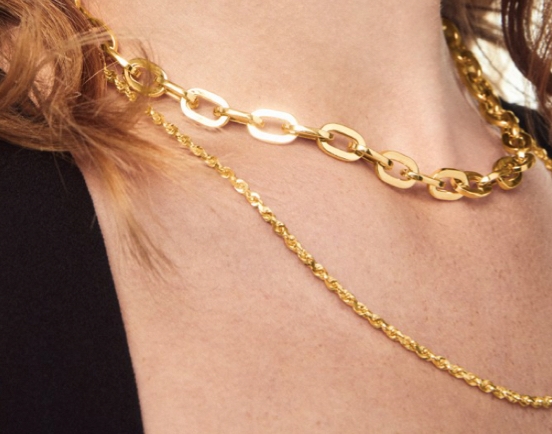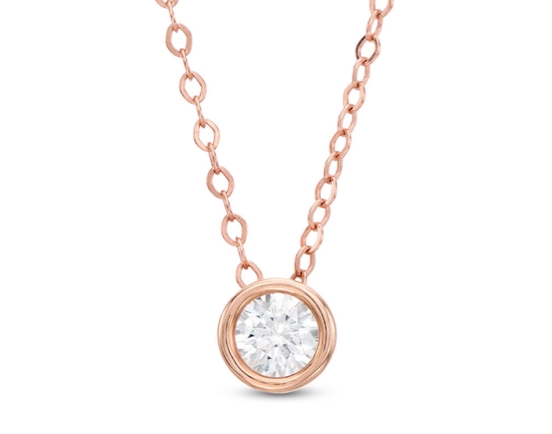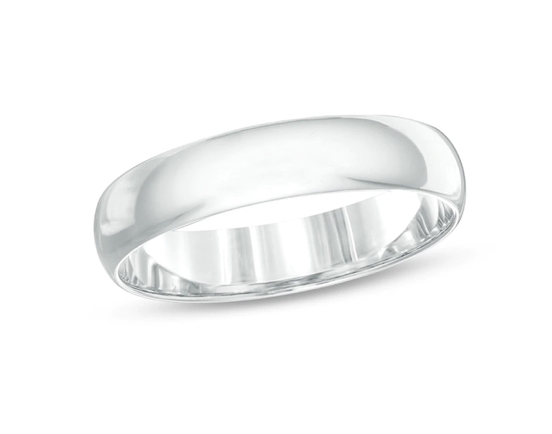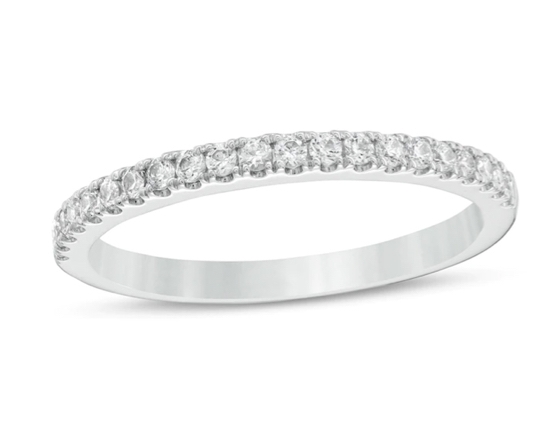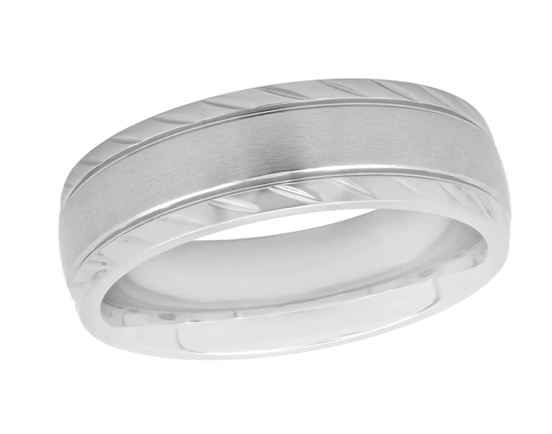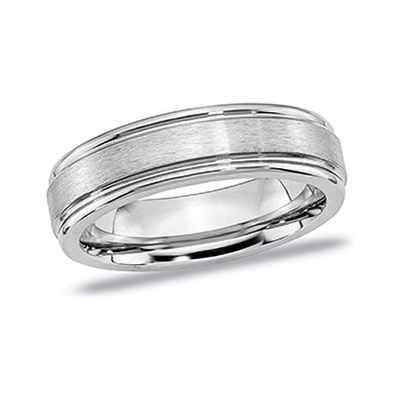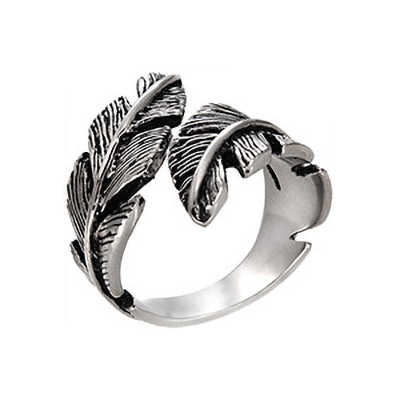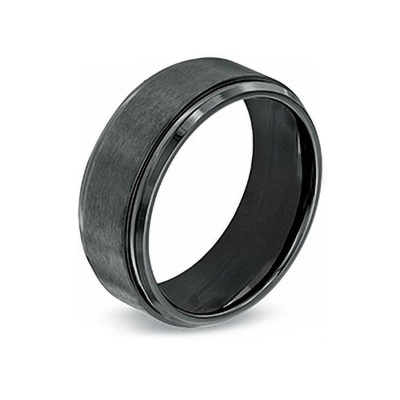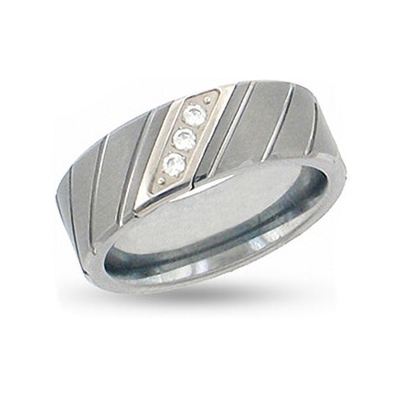Jewelry Metals Guide
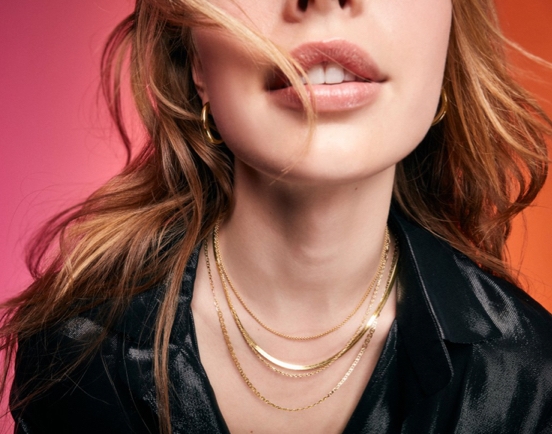
Gold Jewelry
A timeless choice for all types of jewelry, gold is the most easily worked of all metals because it is naturally very malleable. To create gold jewelry that is strong and durable, pure gold is alloyed with other metals, such as copper or zinc, to add strength and color.
Zales commonly uses yellow gold, rose gold, and white gold in its jewelry. Here’s what sets each type apart:

Yellow Gold
Yellow gold has a long legacy. From the crowns and jewelry of royal families in all cultures to the go-to wedding band color from the 1960s-1980s, the popularity of yellow gold has fluctuated, but it never loses its inherent value.
Gold is naturally yellow, but its natural warmth is enhanced when silver or copper is added. The amount of pure gold in the jewelry depends on its karat. The higher the karat, the greater the purity and the lower the durability.
Yellow gold is also the most hypoallergenic of all gold types.
Rose Gold
Rose gold has been around since the early 1900s but became much more prominent with the popularity of "Millennial Pink." The soft color is tied to love and romance and is a trendy gift choice, including engagement rings.
A lustrous pink metal, rose gold can range from red rose to pink gold shades. To create the pink color of rose gold, pure gold is combined with copper and, occasionally, silver.
Rose gold does not need to be dipped or coated as the color is pure. It's not considered hypoallergenic and does require more polishing than other golds to maintain its shine.
White Gold
White gold first appeared in jewelry in the late 19th century as a more affordable alternative to platinum.
Gold is mixed with palladium and silver or nickel, copper, and zinc to create the white-silver color. White gold must also be coated with platinum or rhodium to improve whiteness, durability, and shine.
White gold jewelry occasionally needs to be re-dipped after the coating wears away.
Platinum Jewelry
Rare and precious, platinum is a bright white metal thirty times rarer than gold. It's shiny, beautiful, and will last for generations—an excellent choice for jewelry.
When used in jewelry, it's usually mixed with similar metals— iridium, palladium, ruthenium, rhodium, or osmium. For a piece of jewelry to be labeled as platinum, it must have a purity of at least 90% platinum. Look for the hallmark "PLAT" stamped on the inside of the shank (rings) or the back of the piece.
Sterling Silver
Once considered even more valuable than gold, silver is the most affordable of all the precious metals today. Because pure silver is too soft to be used in jewelry making, it's mixed with copper or other metal to create sterling silver, which is more durable.
Sterling silver can range from bright white to grayish white and have a matte or shiny finish. Silver tends to tarnish and scratch easily, so always store your sterling silver jewelry in tarnish-preventative bags and in a cool, dry place.
Alternative Metals
Cobalt
Cobalt jewelry is made from the same material used to build jet aircraft engines and surgical tools. It is harder than stainless steel and, therefore, harder to scratch.
Although not 100% scratch-proof, cobalt is much harder than titanium and all other precious metals, including platinum, gold, and silver. It is also hypoallergenic.
Stainless Steel
Stainless steel has gone beyond the kitchen to become a desired metal in watches and jewelry. Stainless steel is a silvery-white color with a mirror finish and chromium layer that retains its shine and color while it resists tarnishing.
Among the toughest metals, stainless steel withstands wear and tear well, making it an excellent choice when lifestyle or occupation demands extra durability.
Titanium
Titanium is as strong as steel but 45% lighter in weight. In fact, it has the highest strength-to-weight ratio of any metal.
It's similar to platinum in its resistance to tarnishing—that's what makes it a smart choice for spacecraft as well as jewelry, especially for pieces worn every day.
Titanium is versatile, lightweight, hypoallergenic, and resistant to corrosion, with a metallic color that can shift from white to dark to colorful depending on how it is processed.
Tungsten
Tungsten is very heavy metal with a gray-white color and a lustrous finish. This hypoallergenic metal has the highest melting point and the most strength of all metals—in Swedish, it means "heavy stone." Due to its hardness, the shine tends to be long-lasting.

